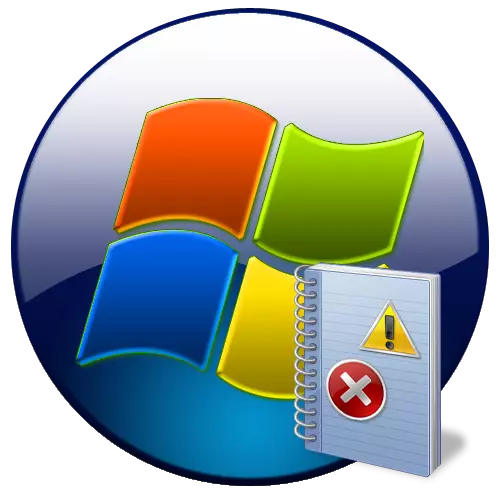
The WINDOVS line is registered with all major events that occur in the system with their subsequent record in the journal. Errors, warnings and just various notifications are recorded. Based on these records, an experienced user can correct the operation of the system and eliminate errors. Let's find out how to open a log of events in Windows 7.
Opening the "View Events" tool
Event log is stored in the system tool, which is called "View Events". Let's see how using the various methods you can go to it.Method 1: "Control Panel"
One of the most common ways to run the tool described in this article, although not the easiest and most convenient, is carried out using the "control panel".
- Click "Start" and go to the inscription "Control Panel".
- Then go to the "System and Security" section.
- Next click the name "Administration" section.
- Once in the specified section in the List of System Utilities, look for the name "View Events". Click on it.
- The target tool is activated. To specifically get into the system log, click on the "Windows Magazines" item in the left area of the window interface.
- In the list that opens, choose one of the five subsections you are interested in:
- Application;
- Security;
- Installation;
- System;
- Redirection of an event.
In the central part of the window, the event log appears corresponding to the selected subsection.
- Similarly, you can reveal the "Application Logs and Services" section, but there will be a larger list of subsections. Selecting a specific one will lead to the display in the center of the list of the corresponding events.
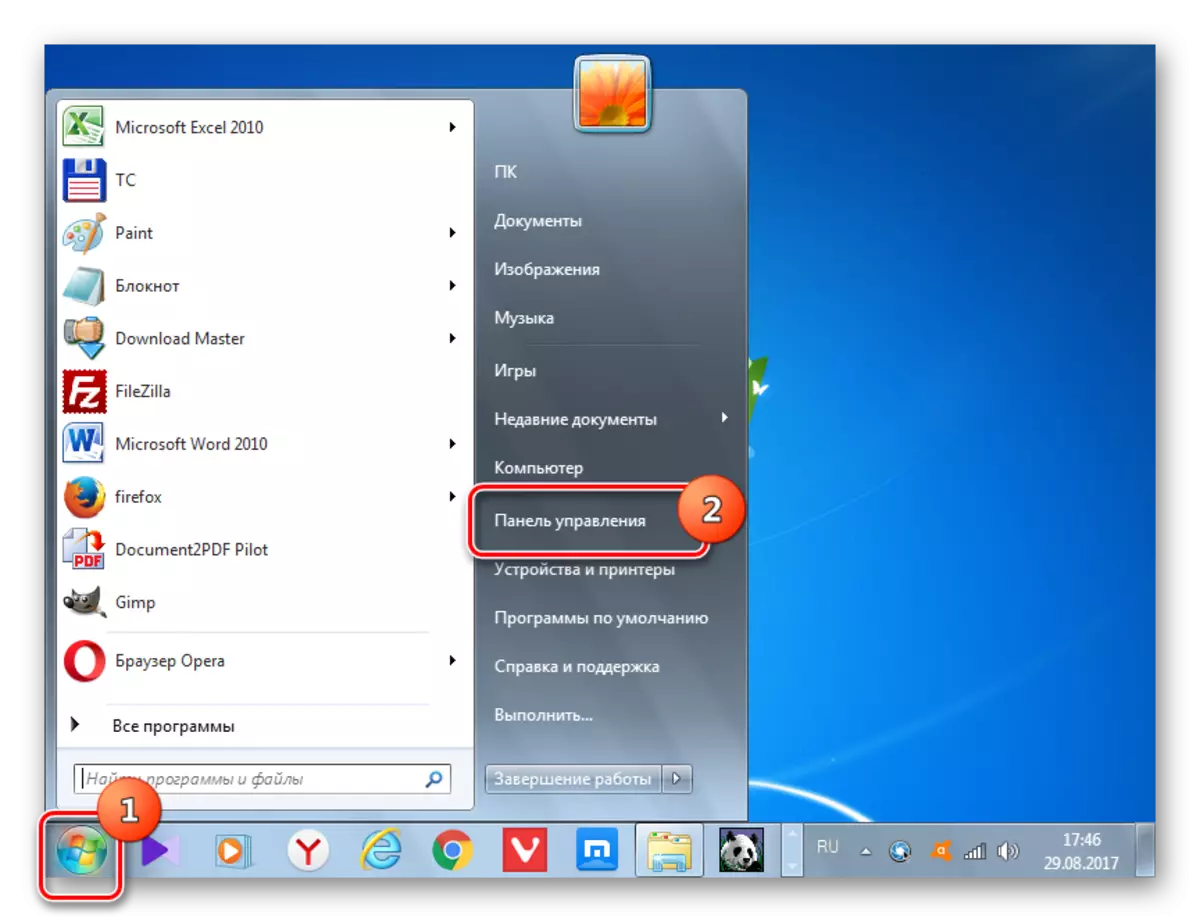
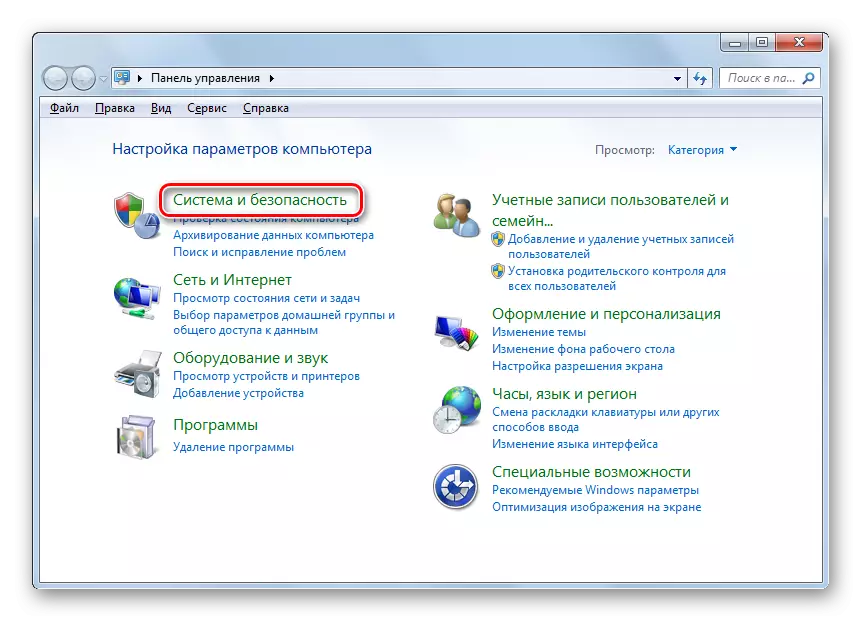
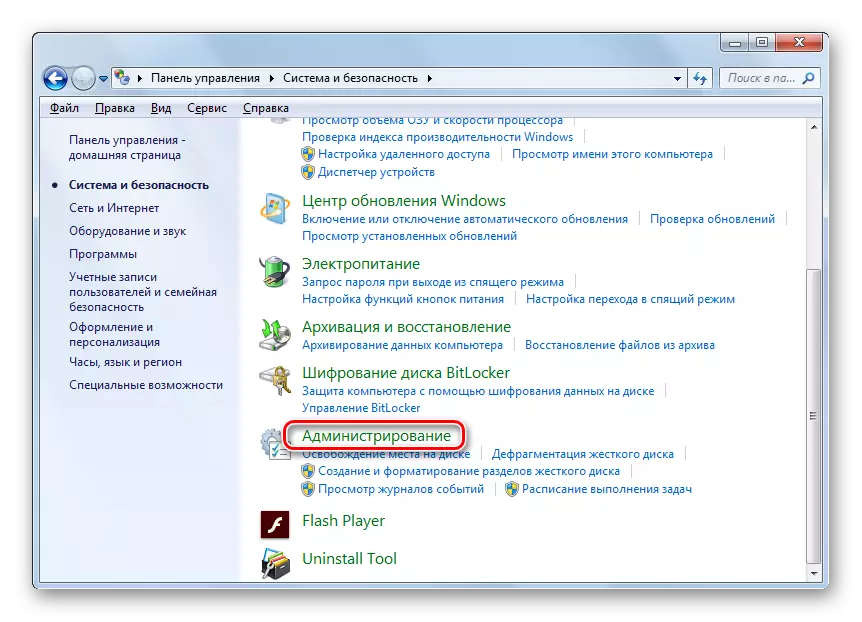
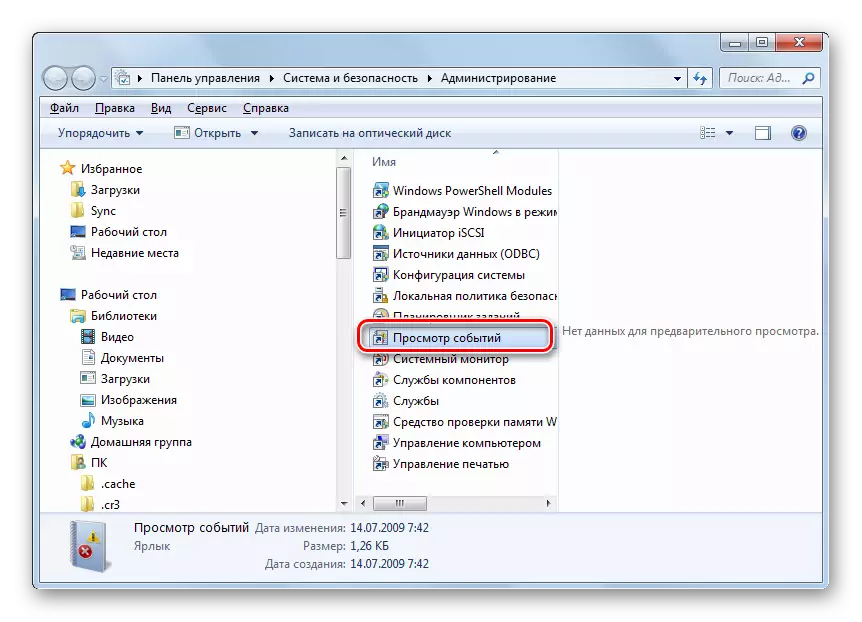
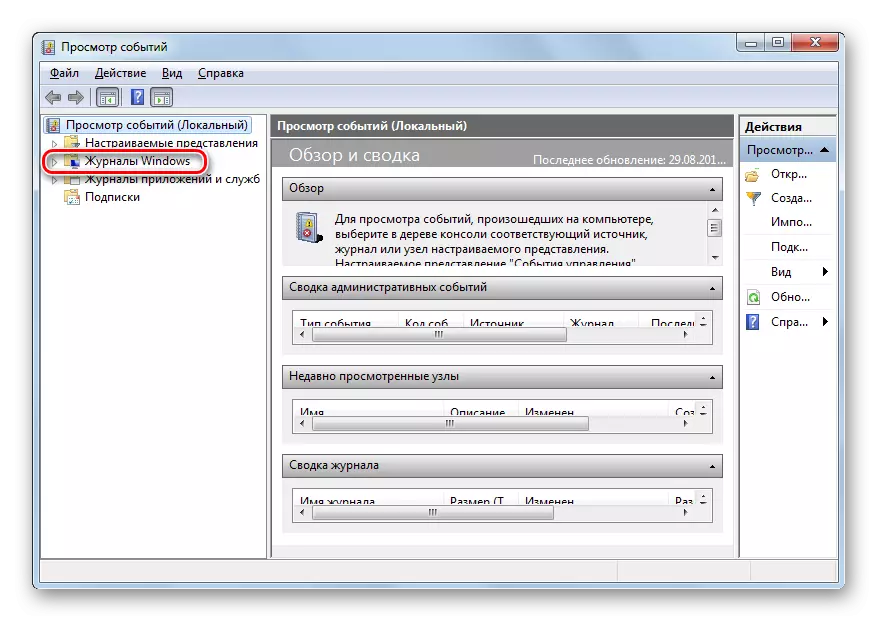
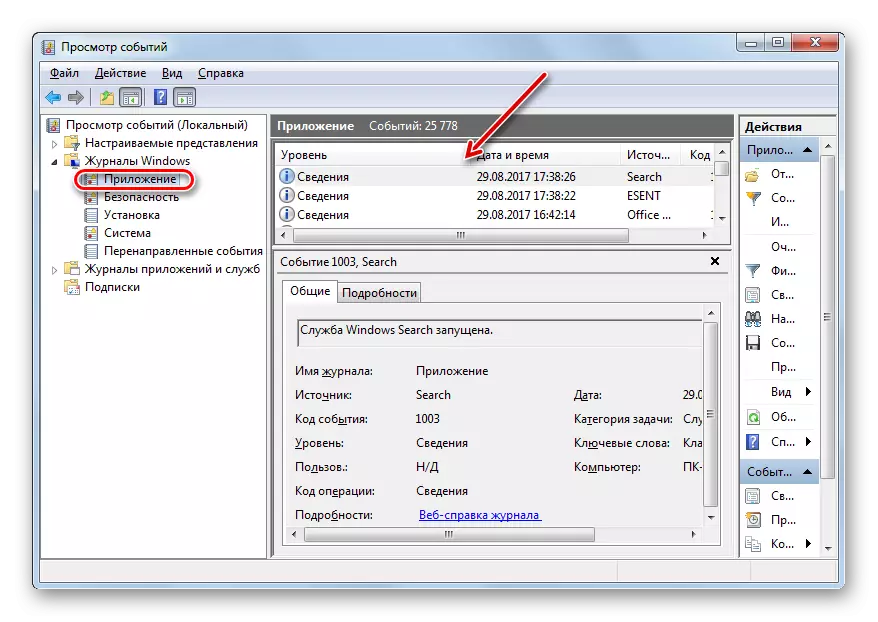
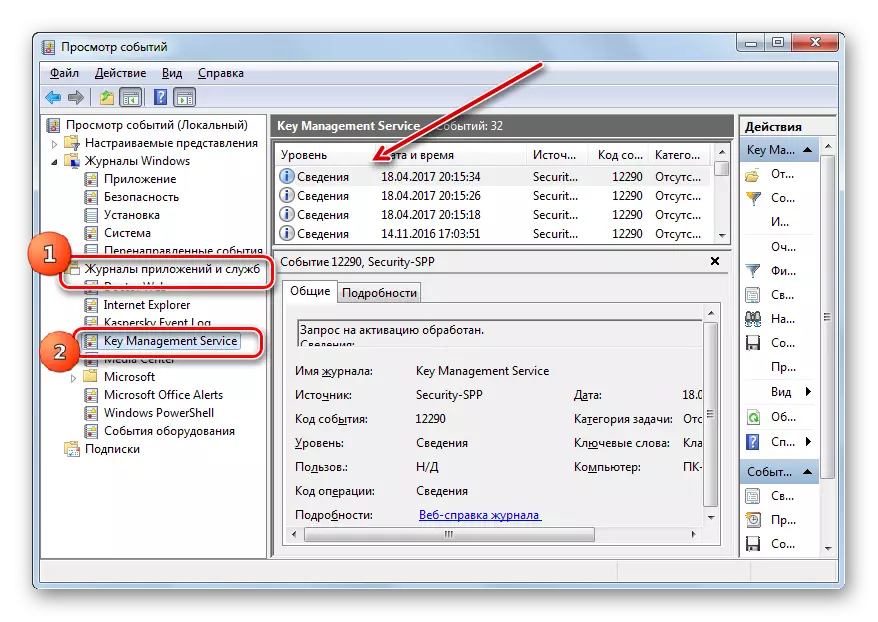
Method 2: Means "Perform"
It is much easier to initiate the activation of the described tool using the "Run" means.
- Enter the combination of Win + R keys. In the field of running tools, Wheel:
Eventvwr.
Click OK.
- The desired window will be open. All further actions to view the magazine can be made on the same algorithm that was described in the first way.
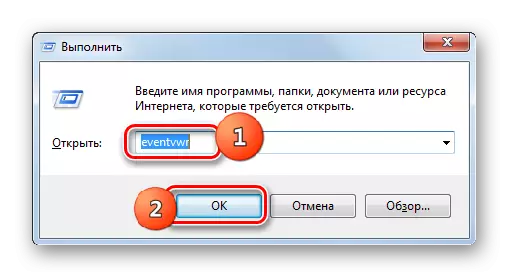
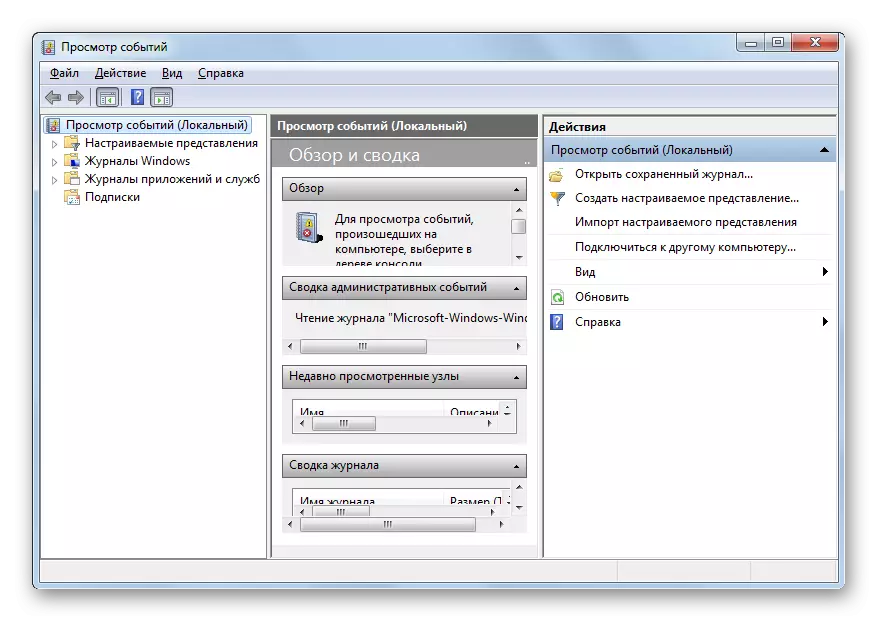
The basic disadvantage of this quick and convenient way is to keep the windows call command in the mind.
Method 3: Start Menu Search Field
A very similar method of calling the tool we studied by us is carried out with the use of the "Start" menu search field.
- Click "Start". At the bottom of the opened menu of the field. Enter the expression there:
Eventvwr.
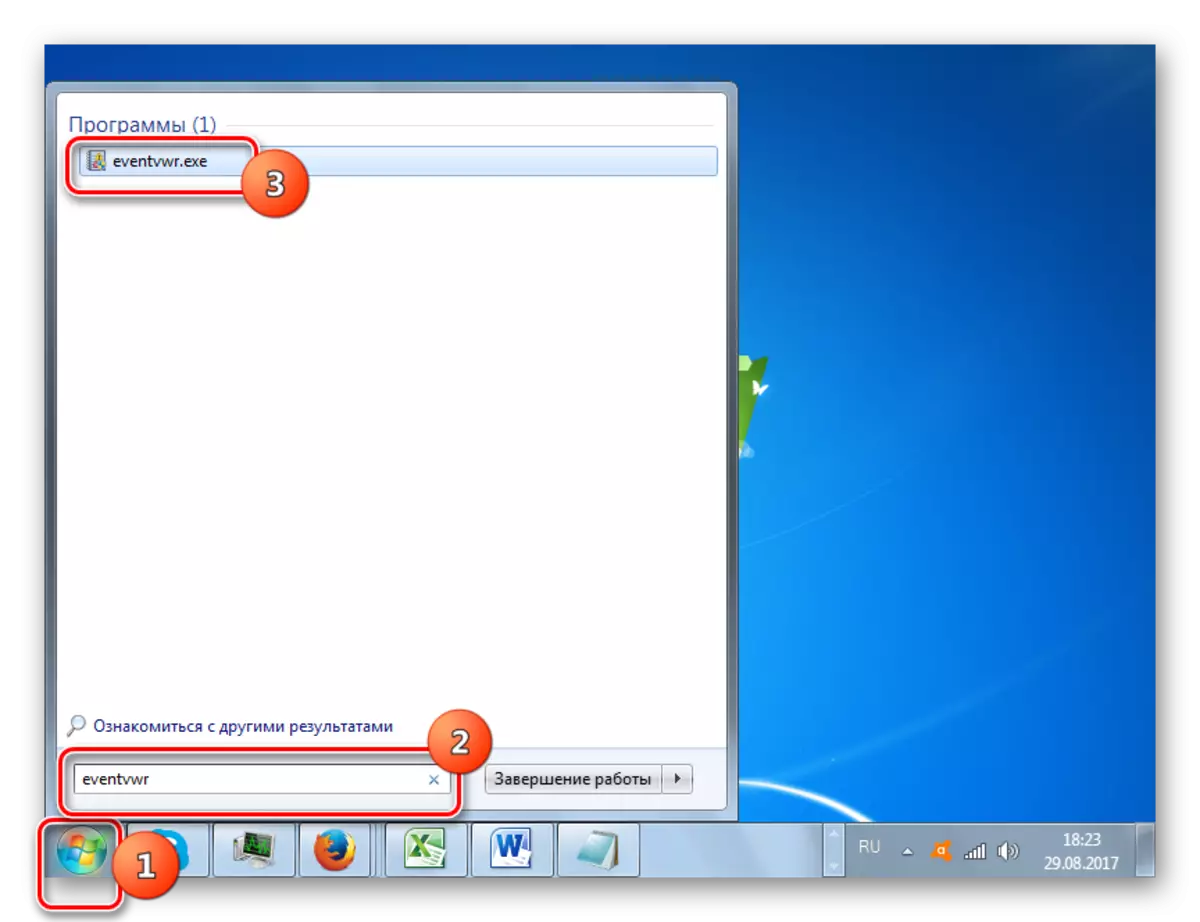
Or just write:
View events
In the list of issuing in the "Program" block, the name "eventvwr.exe" or "view events" will appear depending on the expression entered. In the first case, most likely, the result of issuing will be the only one, and in the second there will be several of them. Click one of the above names.
- The magazine will be launched.
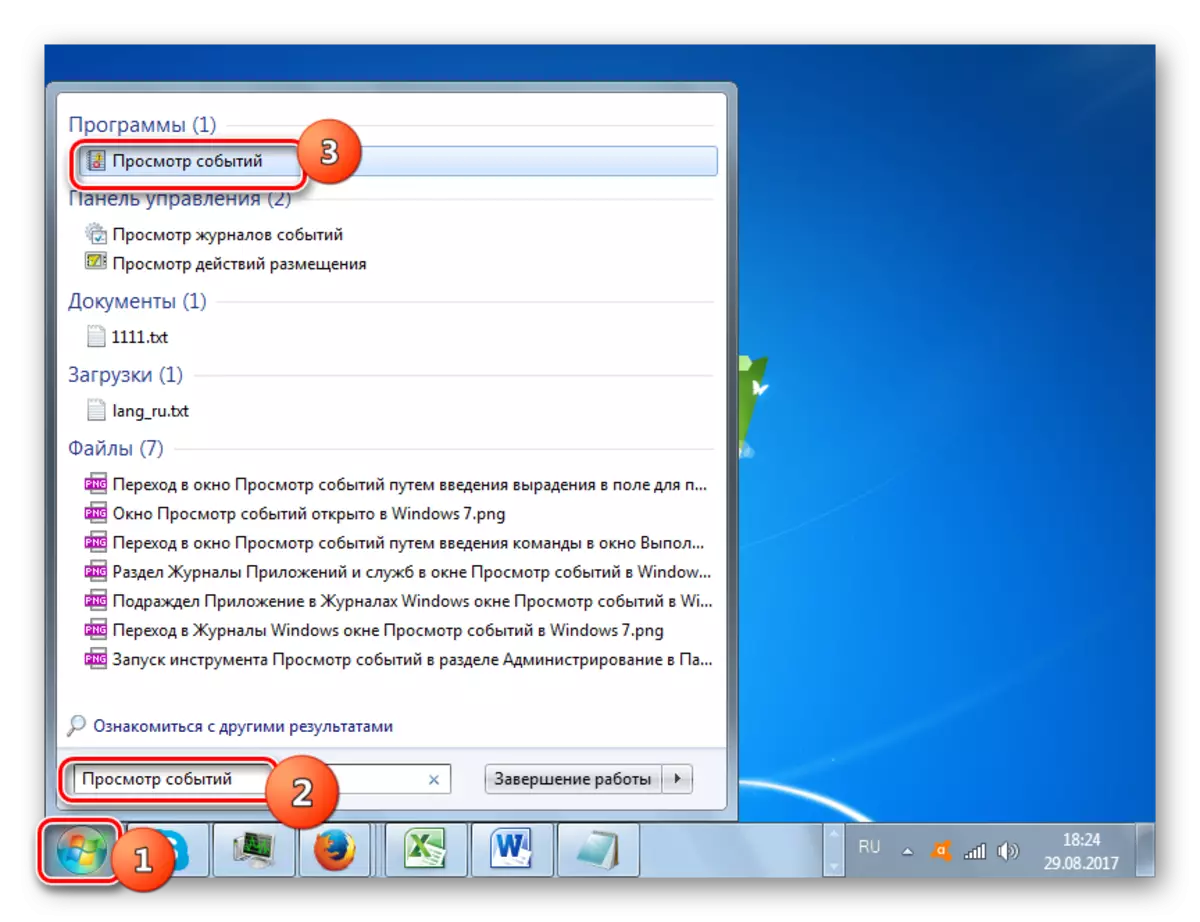
Method 4: "Command String"
Calling the tool through the "Command line" is quite uncomfortable, but also this method exists, and therefore it also costs a separate mention. First we need to call the "Command Line" window.
- Click "Start". Next, choose "All Programs".
- Go to the folder "Standard".
- In the list of opened utilities, click on the "Command Line". Activation with administrative powers is not necessary.
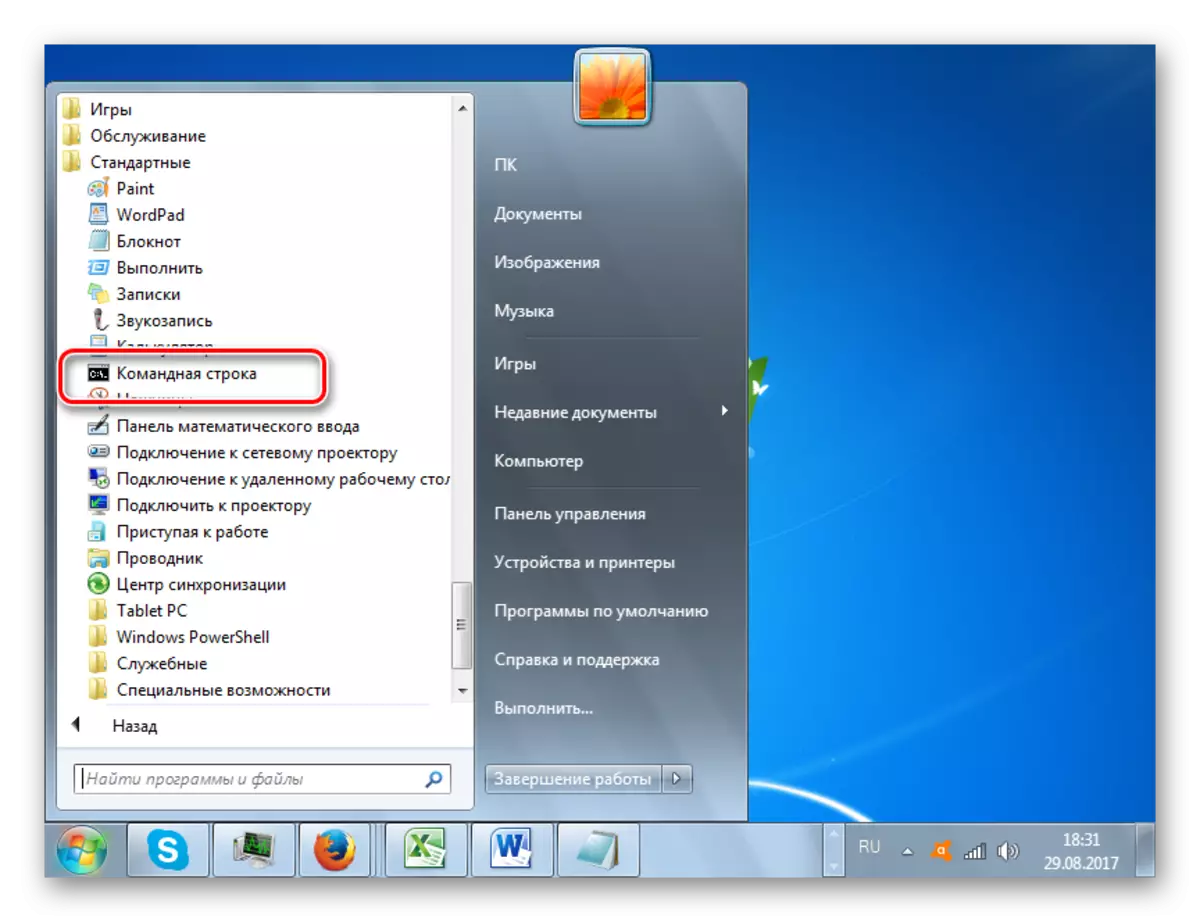
You can start and faster, but for this you need to remember the command line activation command. Type Win + R, thus initiating the launch of the "Run" tool. Enter:
cmd.
Click "OK".
- With any of the two above actions, the "Command Line" window will be launched. Enter a familiar team:
Eventvwr.
Press ENTER.
- The log window will be activated.
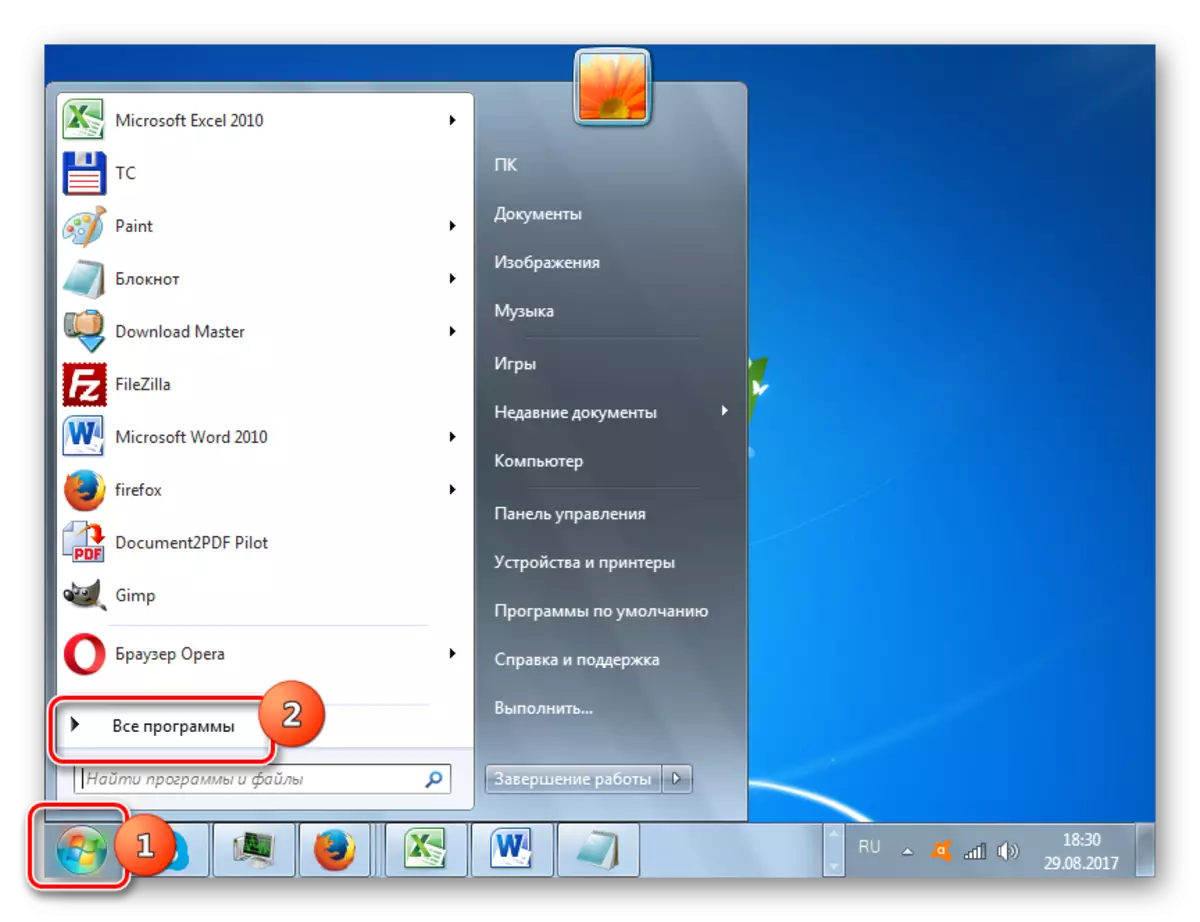
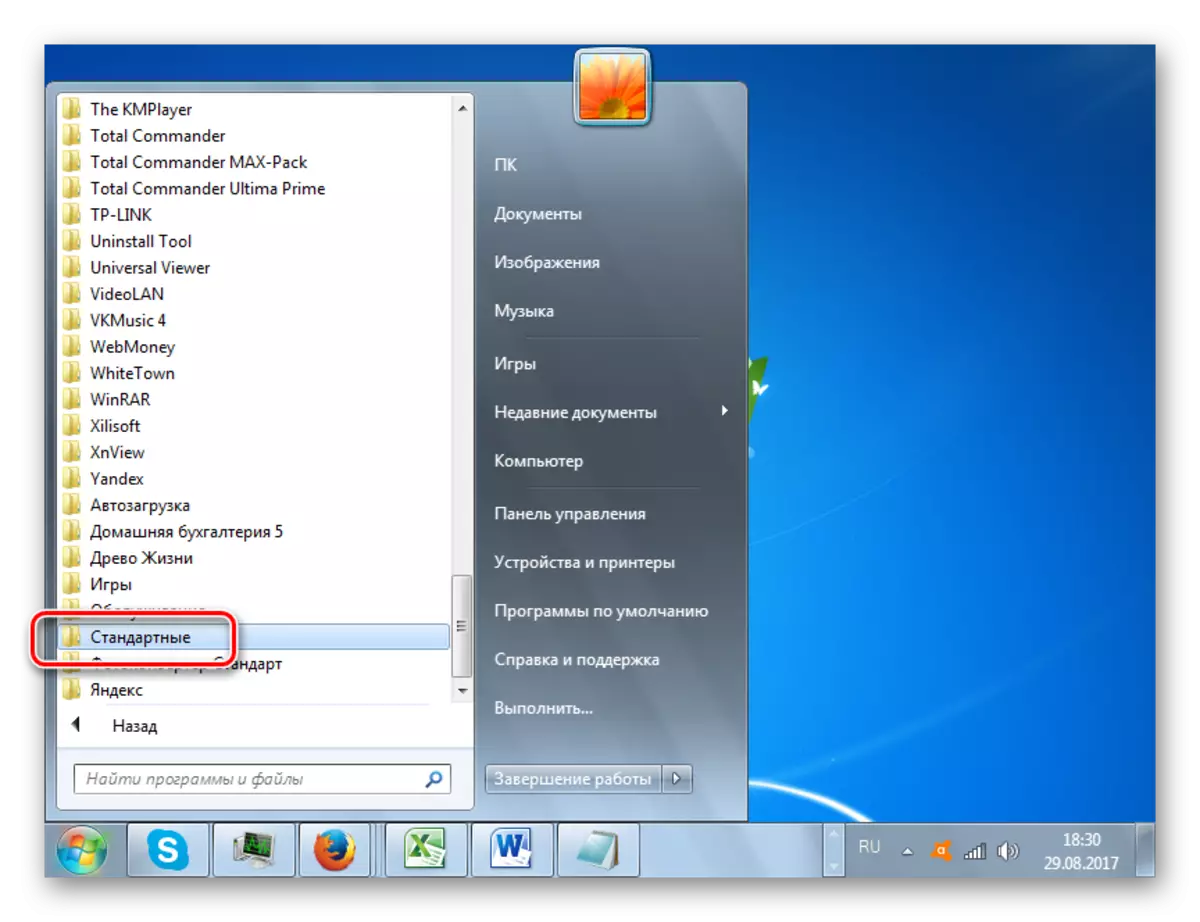
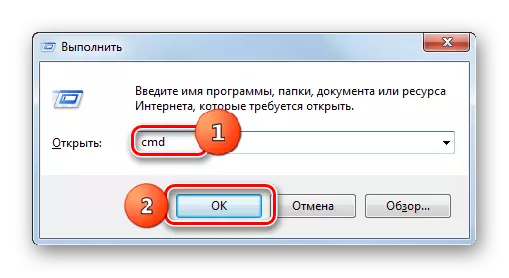
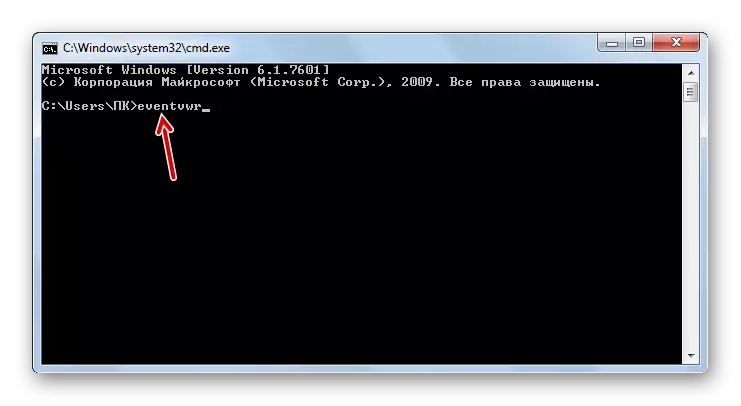
Lesson: Enabling "Command Line" in Windows 7
Method 5: Direct Start of the EventVwr.exe file
You can use such an "exotic" solution to solve the task, as a direct start of the file from the "Explorer". However, this method can be useful in practice, for example, if the failures have achieved this scale that other options to start the tool are simply not available. It happens extremely rare, but it is quite possible.
First of all, you need to go to the location of the Eventvwr.exe file. It is located in the system directory for this way:
C: \ Windows \ System32
- Run the Windows Explorer.
- Drive the address that was previously presented to the address field and click Enter or click on the right icon.
- Moving to the "System32" directory. It is here that the target file "Eventvwr.exe" is stored. If you are not included in the extension display system, the object will be called "Eventvwr". Find and make a double click on it with the left mouse button (LKM). To make it easier to search, since the elements are quite a lot, you can sort objects by alphabetically by clicking on the "name" parameter at the top of the list.
- It will activate the log window.
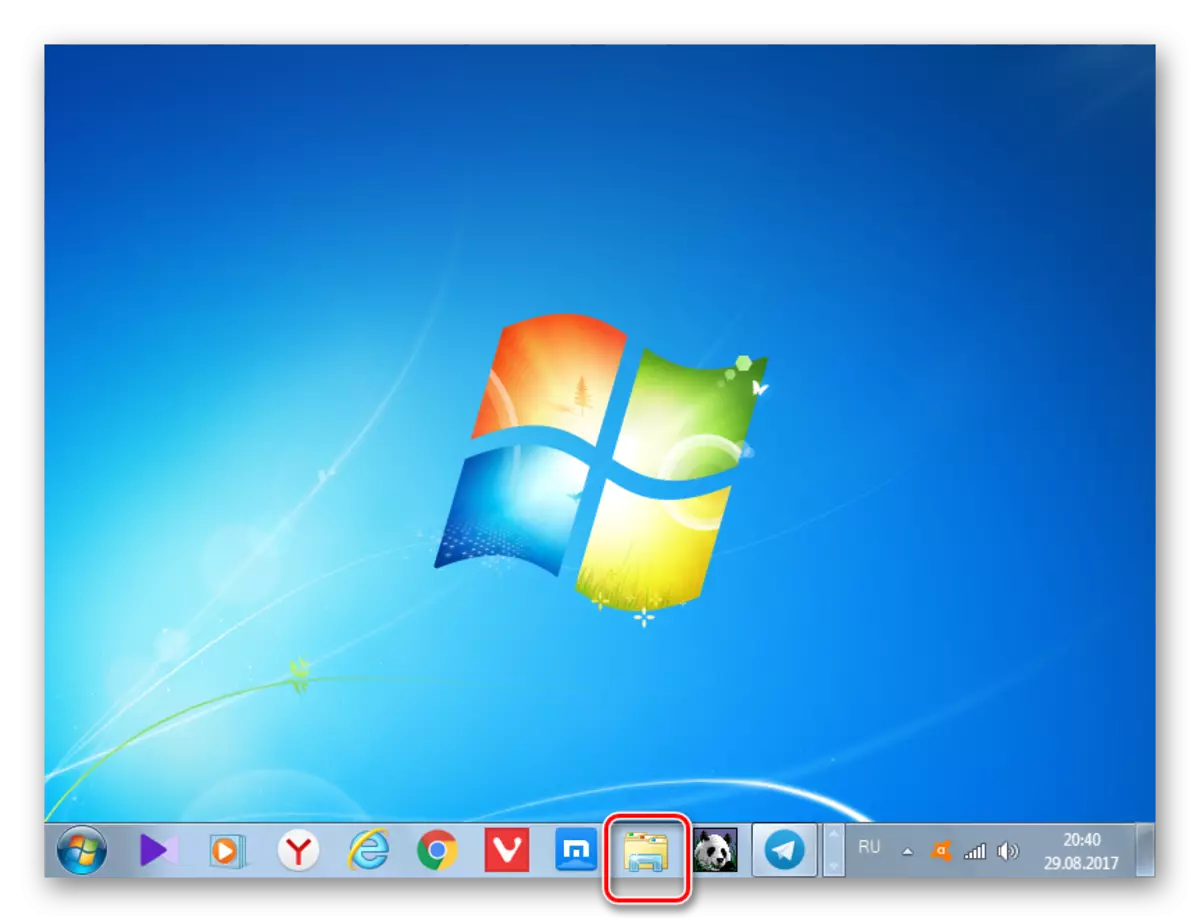
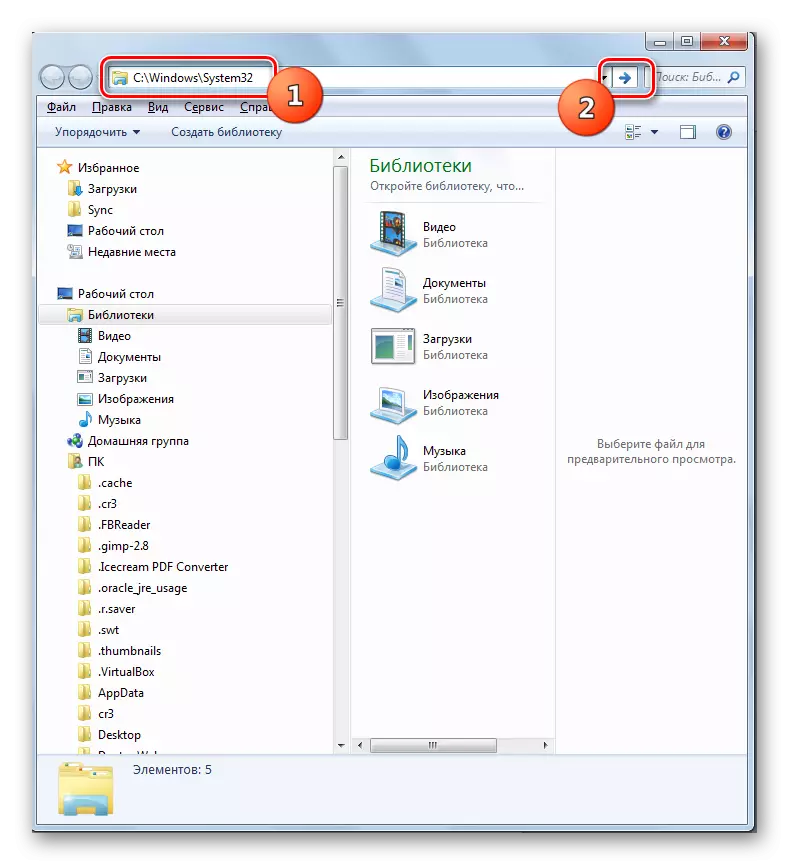
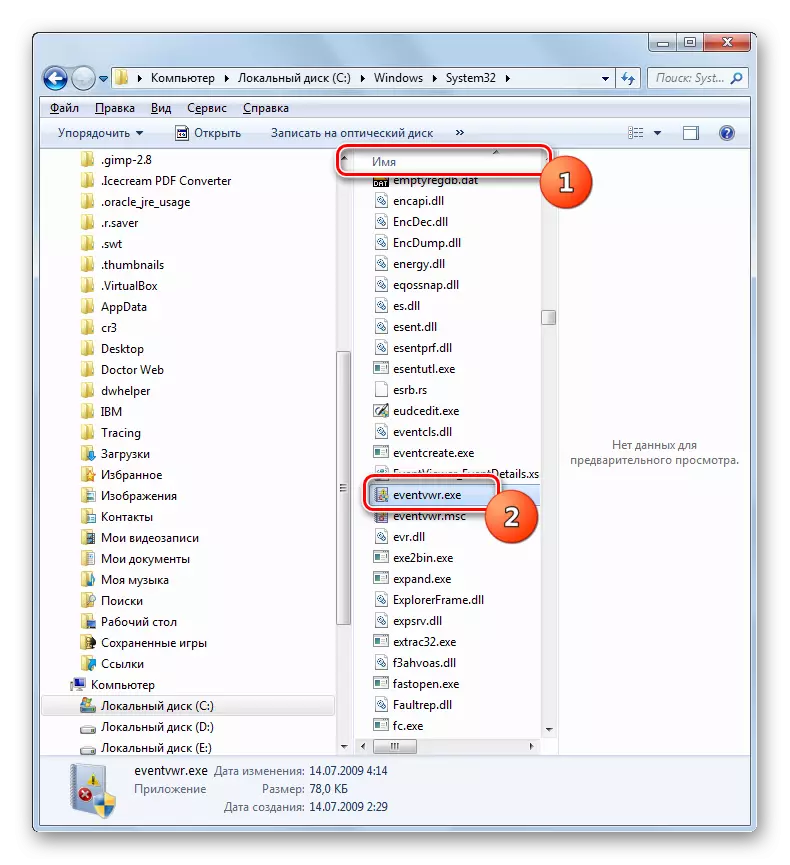
Method 6: Entering the path to the file in the address bar
Using the "Explorer" you can run the window that interests us and faster. It does not even have to look for Eventvwr.exe in the System32 directory. To do this, in the address field "Explorer" just need to specify the path to this file.
- Run the "Explorer" and enter such an address in the address field:
C: \ Windows \ System32 \ Eventvwr.exe
Click ENTER or click on the arrow emblem.
- The log window is immediately activated.
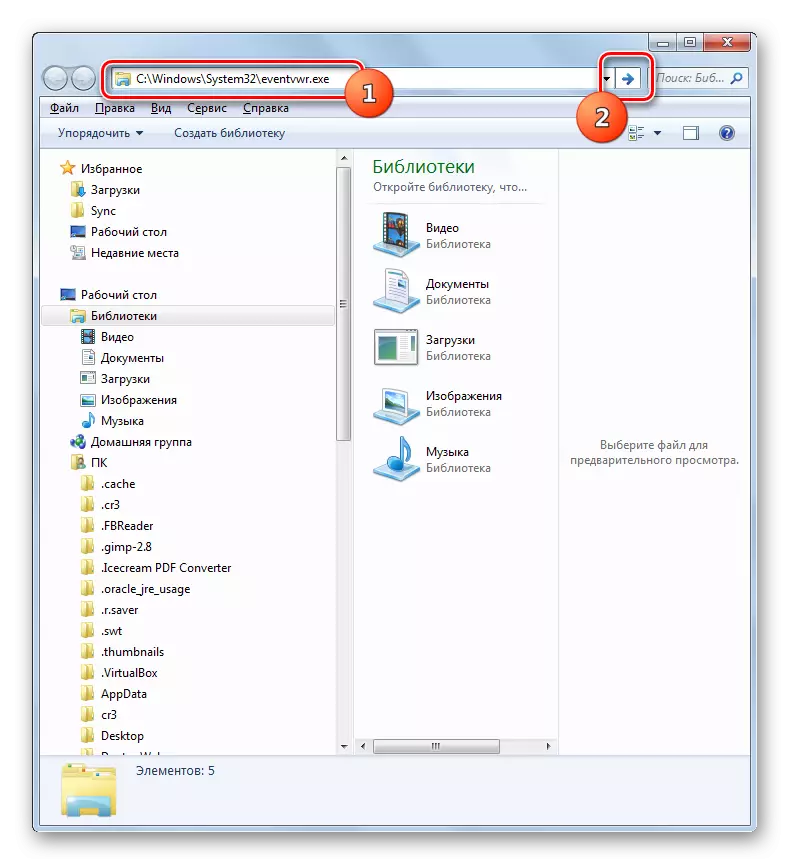
Method 7: Creating a Label
If you do not want to memorize various commands or transitions to the "Control Panel" sections, you consider too uncomfortable, but often use the log, then in this case you can form an icon on the "desktop" or in another convenient place for you. After that, the launch of the "View Events" tool will be used as simple as possible and without the need to memorize something.
- Go to the "Desktop" or run "Explorer" in the location of the file system where you are going to create an access icon. Right-click on the empty area. In the menu, move by "Create" and then click "Label".
- A label forming tool is activated. In the window that opened, make the address that has already been discussed:
C: \ Windows \ System32 \ Eventvwr.exe
Click "Next".
- The window is started, where you need to specify the name of the icons by which the user will determine the activated tool. By default, the name of the executable file is used as the name, that is, in our case "Eventvwr.exe". But, of course, this name is not enough to say the uninitiated user. Therefore, it is better to enter such an expression in the field:
The event log
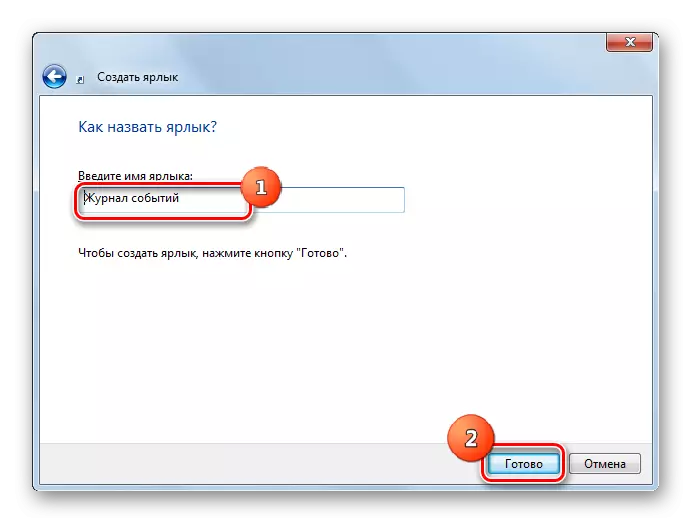
Or this:
View events
In general, enter any name for which you will navigate which tool this icon runs. After entering, press "ready."
- launch icon will appear on the "Desktop" or in any other location where you created it. To activate the tool "Event Viewer" is enough to click on it twice LMB.
- The required system app will be launched.
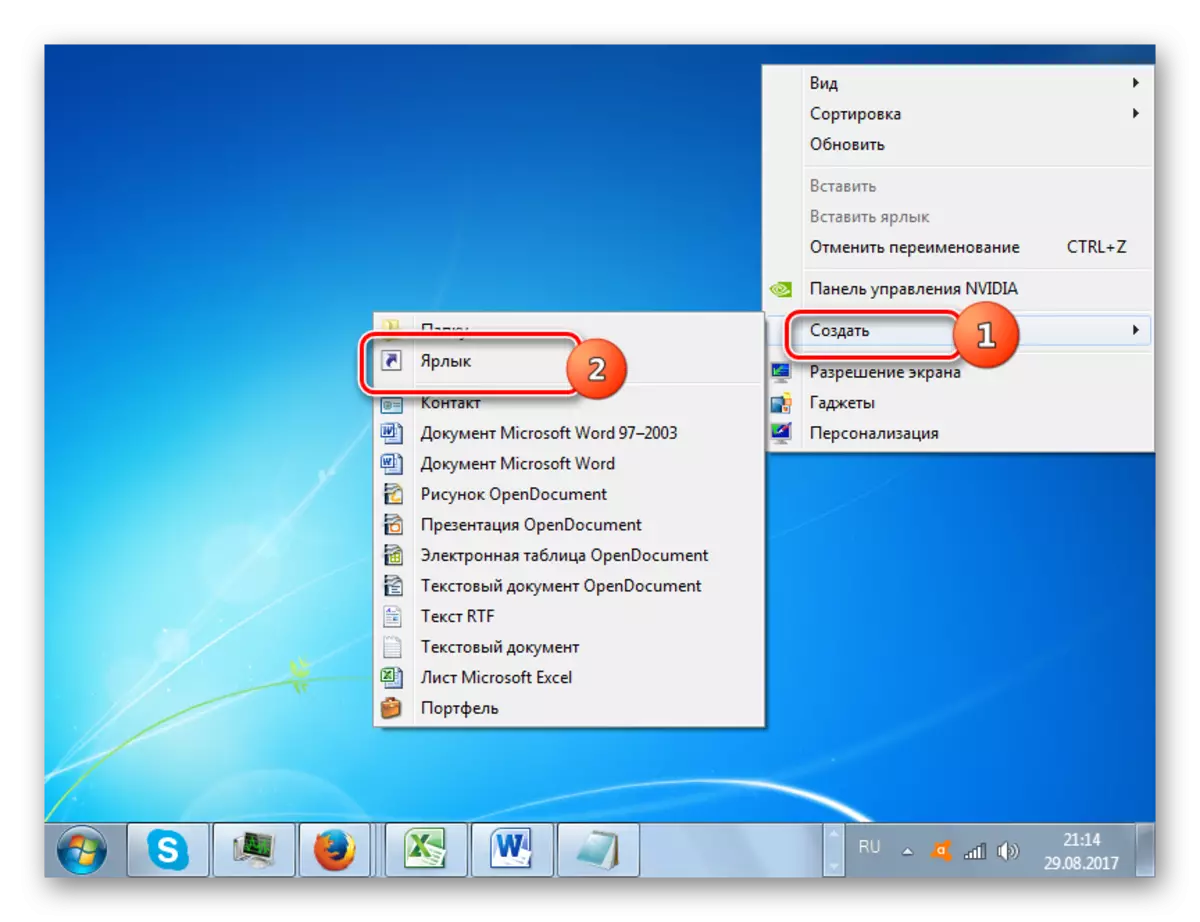
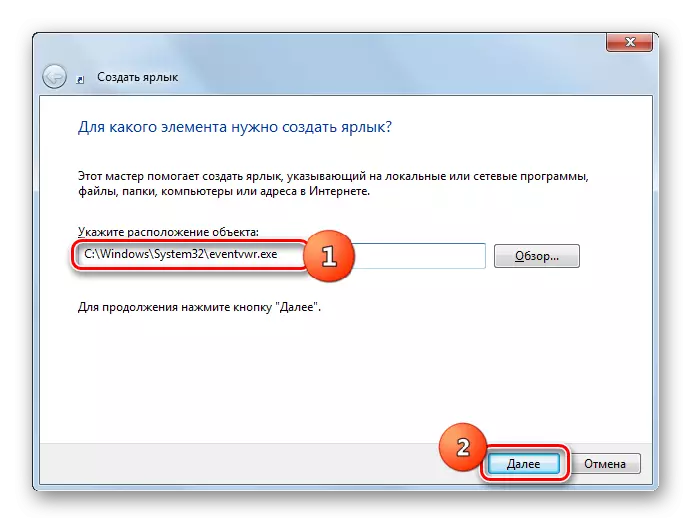
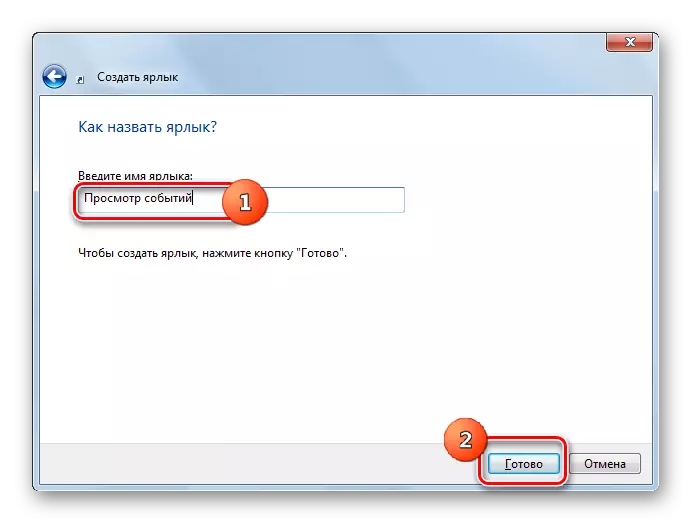
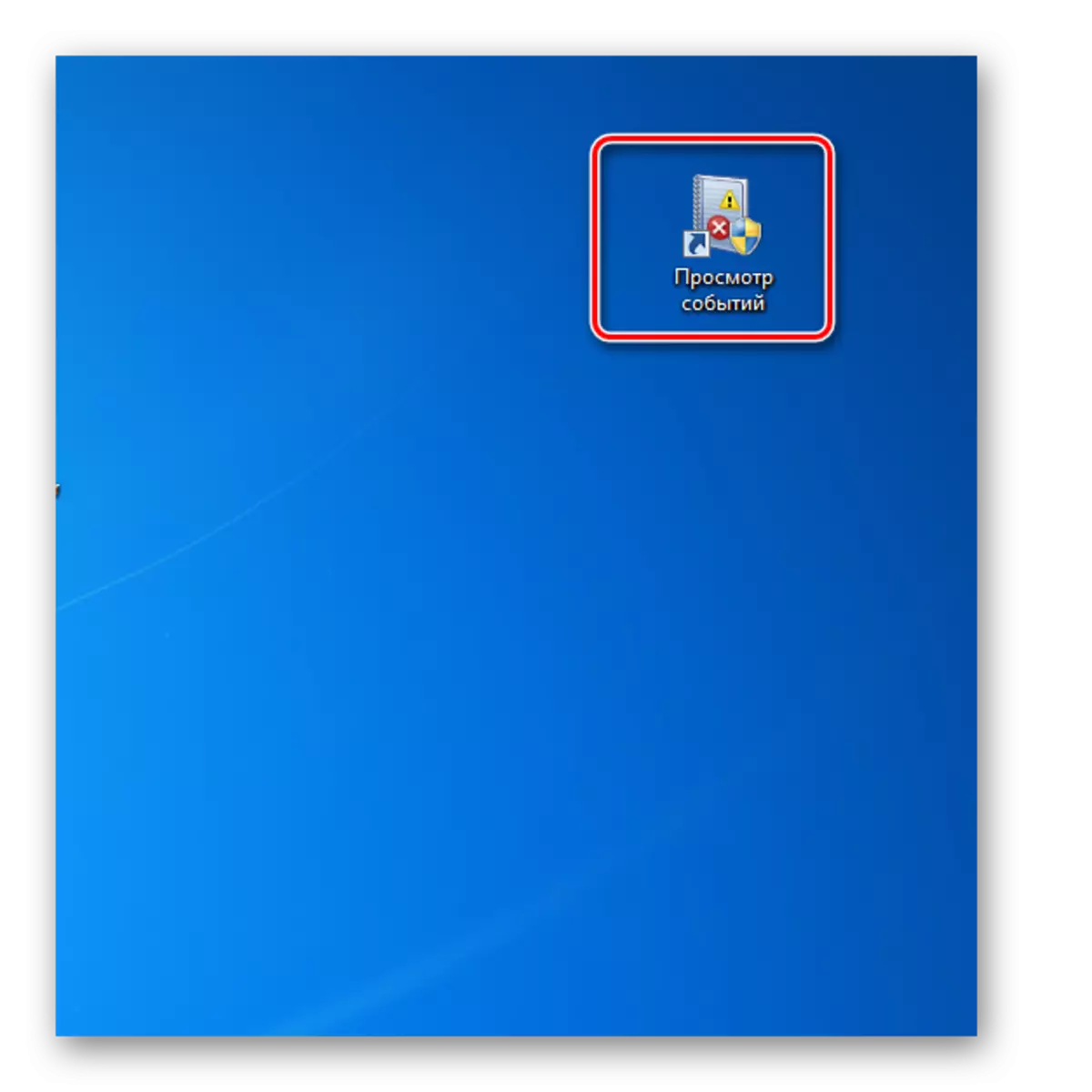
Problems with the magazine opening
There are cases when there are problems with the opening of the magazine above-described methods. Most often this is due to the fact that is responsible for the operation of this tool is disabled service. When you try to start the tool "Event Viewer" will show a message that says that the event log service is not available. Then it is necessary to make activation.
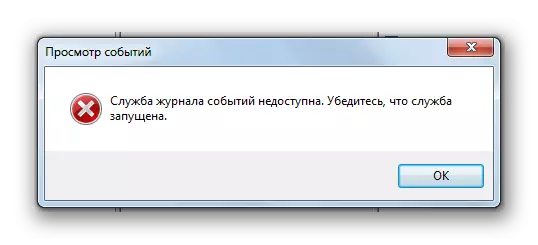
- First of all, you need to go to the "Service Control Manager". This can be done from the "Control Panel", which is called the "Administration". How to go into it, was described in detail when considering the method 1. Once in this section, look for the item "Services". Click on it.
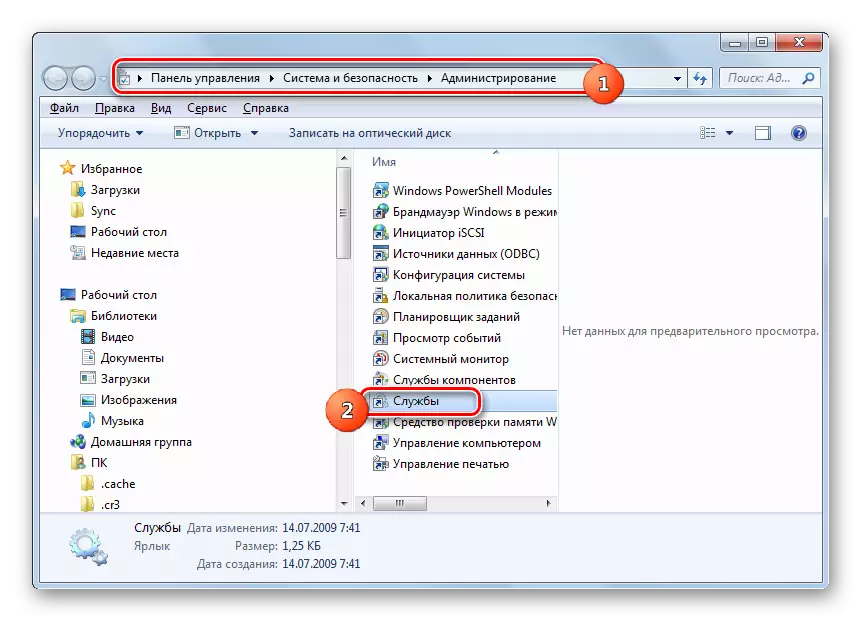
In the "Service Control Manager" you can go by using the "Run". Call it by typing win + r. The area for input type in:
Services.msc.
Click "OK".
- Regardless of whether you have made the transition through the "Control Panel", or used a command prompt in the tool box "Run", launched "Service Control Manager". In the search for an element of "event log Windows». To facilitate the search, you can build a list of all the objects in alphabetical provide designated by clicking on the name of the field "Name". Once the desired string is found, look at the corresponding value in the column "Status." If the service is enabled, there is an inscription should be "working". If it's empty, it means that the service is deactivated. Also look at the value in the column "Startup Type". Normally there should be the inscription "Automatic". If there is worth the value "Disabled", then this means that the service is not activated when the system starts.
- To fix this, go to the properties of the service by clicking on the name, double coatings.
- Window opens. Click on the field "Startup Type".
- From the list of options, select "Automatic".
- Click on the words "Apply" and «OK».
- Returning to "Services Manager", notify the "Windows event log". In the left side of the shell click on the launch inscription.
- Running service produced. Now in the corresponding field, the "Status" column field will display the value "Works", and "Automatically" will appear in the "Type Type" column field. Now the magazine can be opened by any of those methods that we described above.
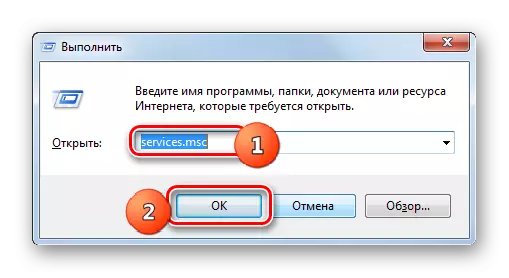
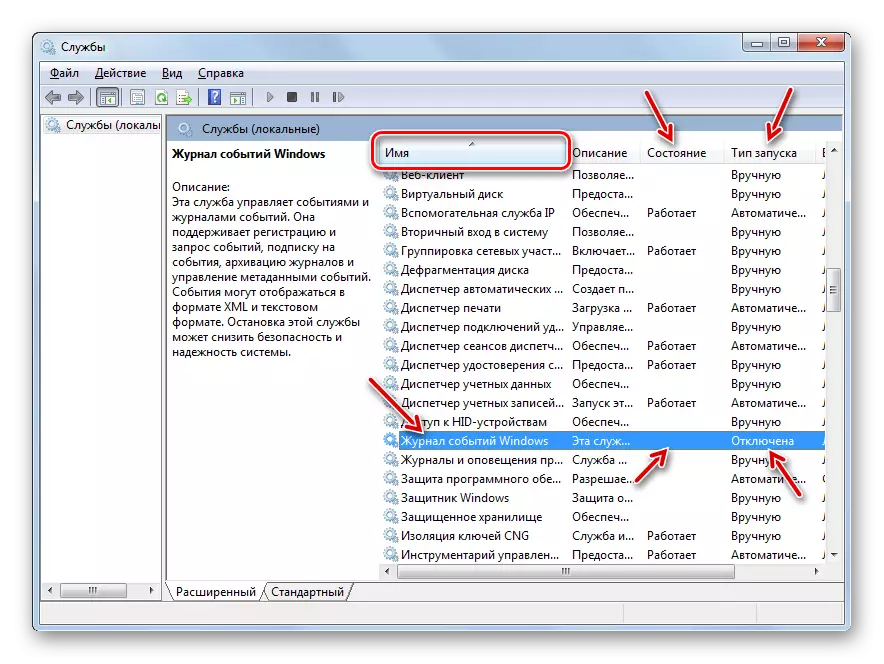
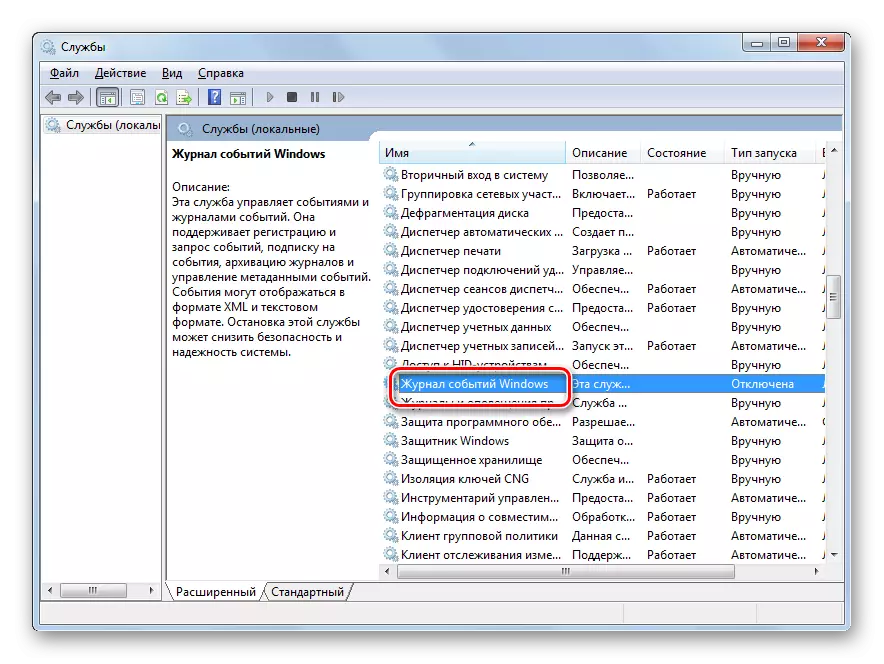
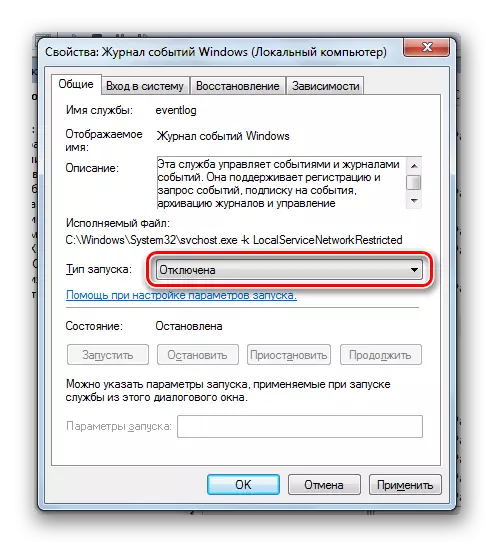
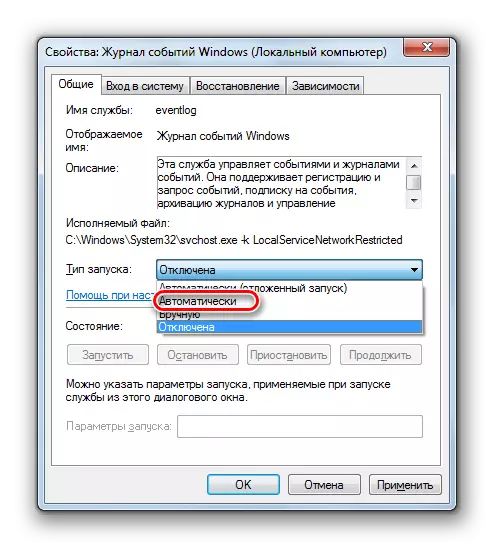
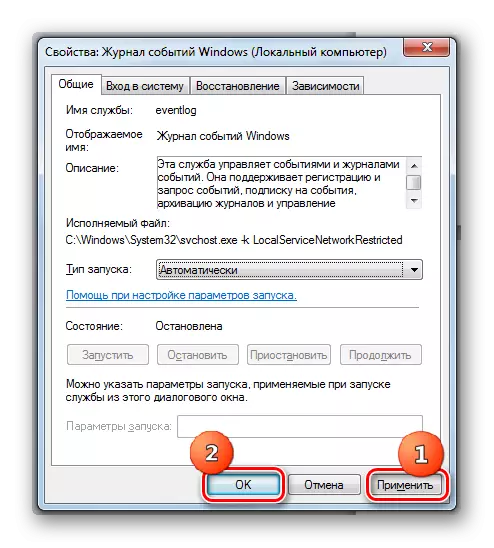
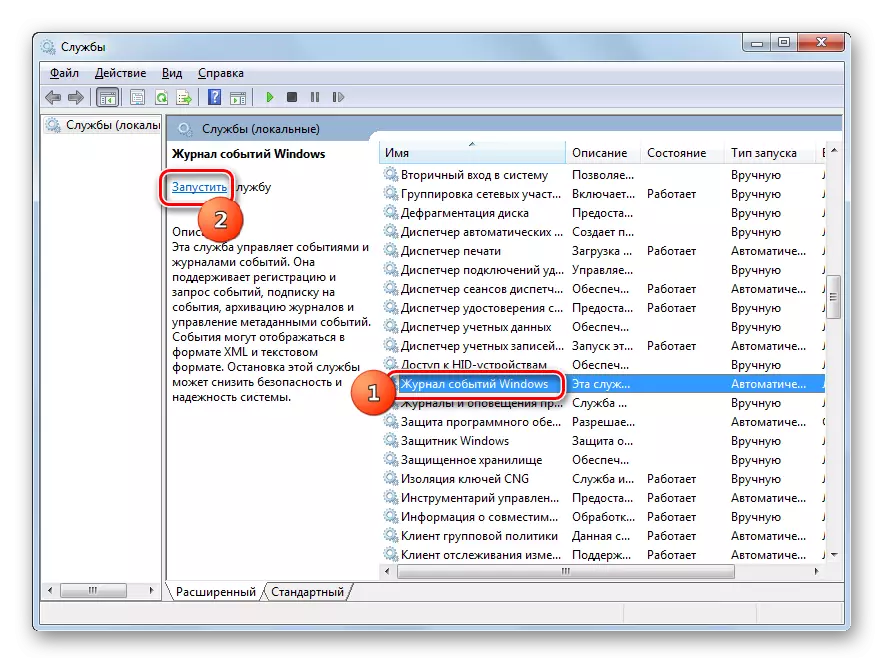
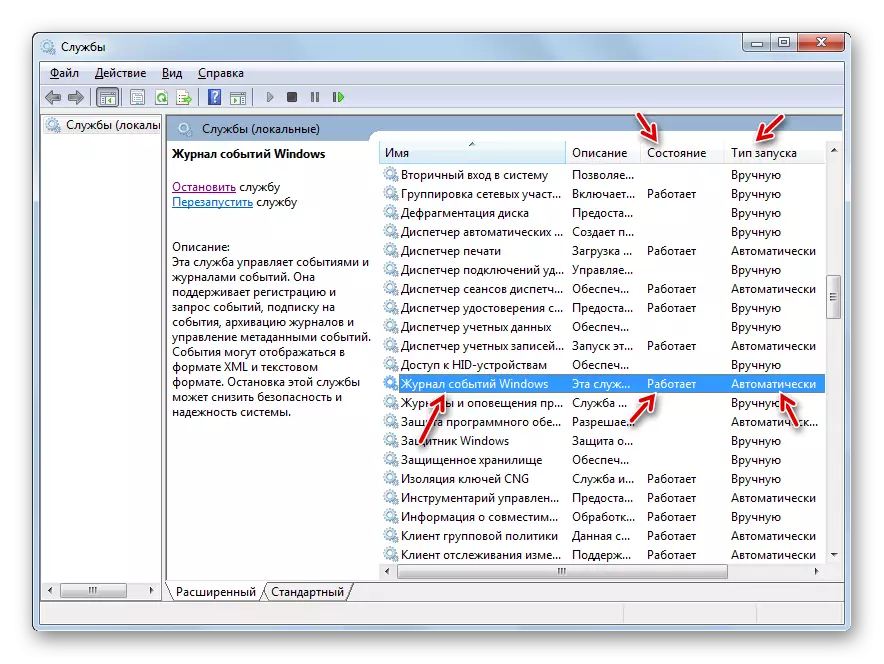
There are quite a few options to activate the event log in Windows 7. Of course, the most convenient and most popular ways are the transition through the "Toolbar" panel, activation using the "Run" tool or the "Start" menu field. For convenient access to the described feature, you can create an icon on the "desktop". Sometimes there are problems with the launch of the "View Events" window. Then you need to check whether the relevant service is activated.
